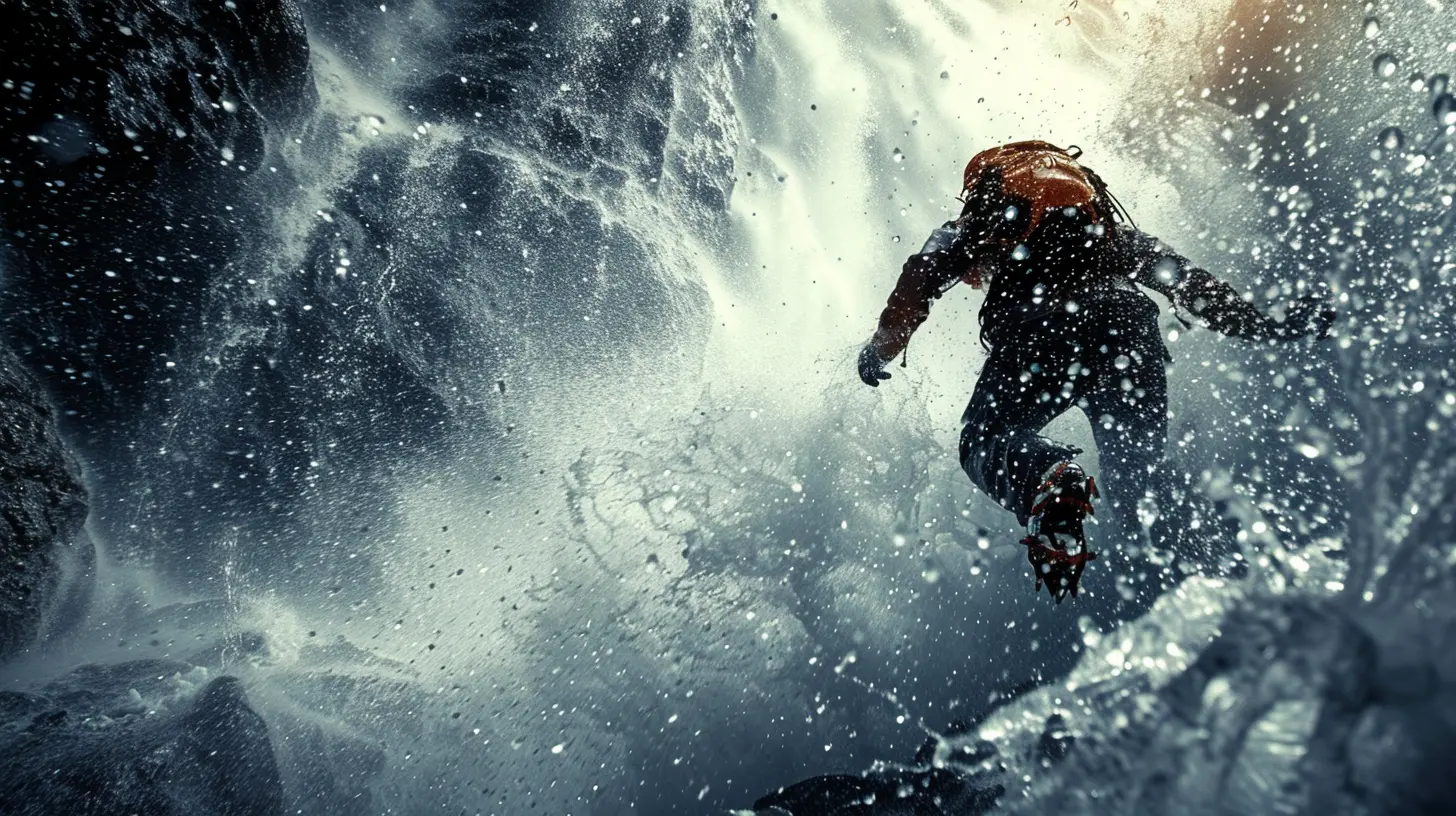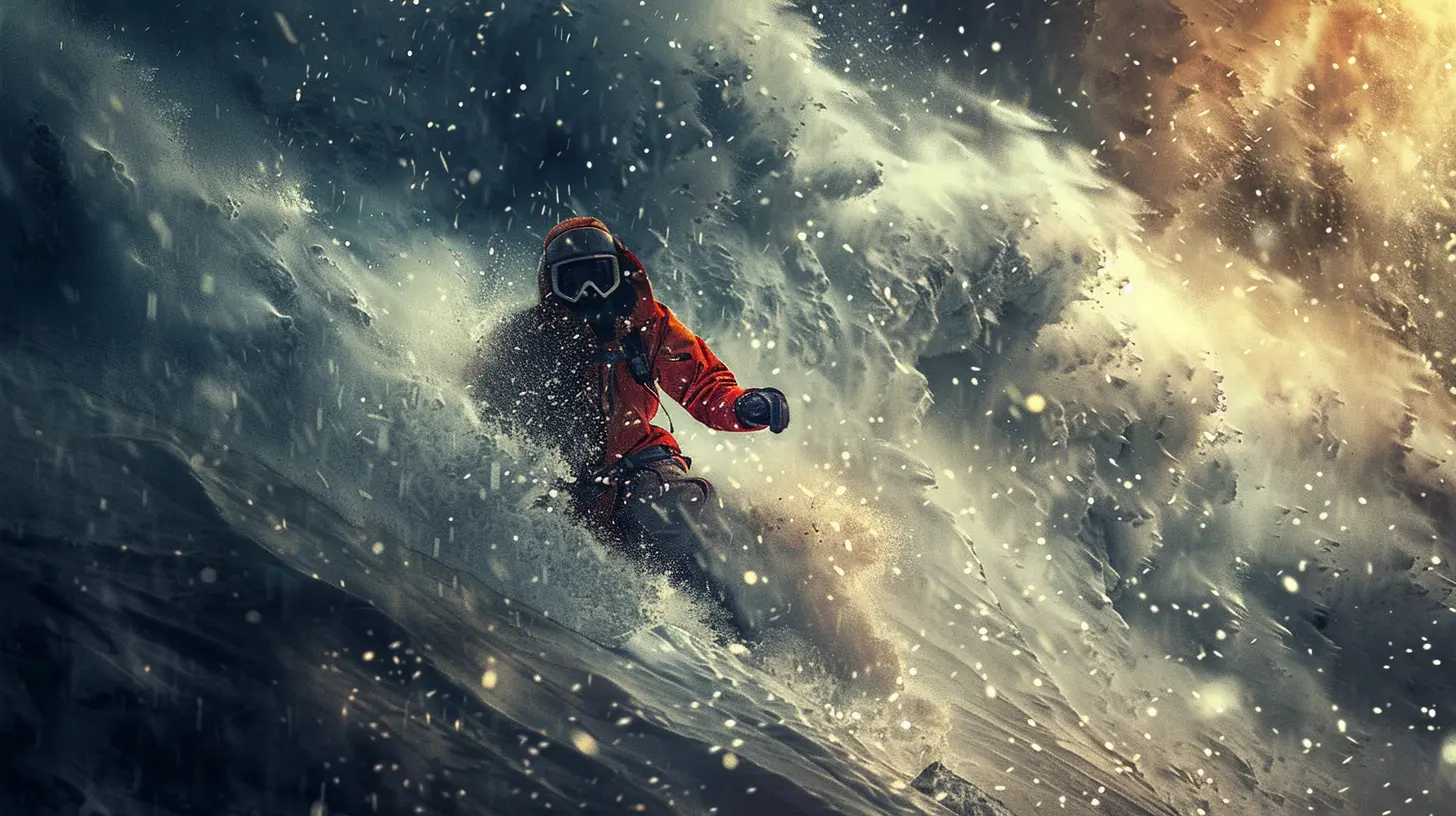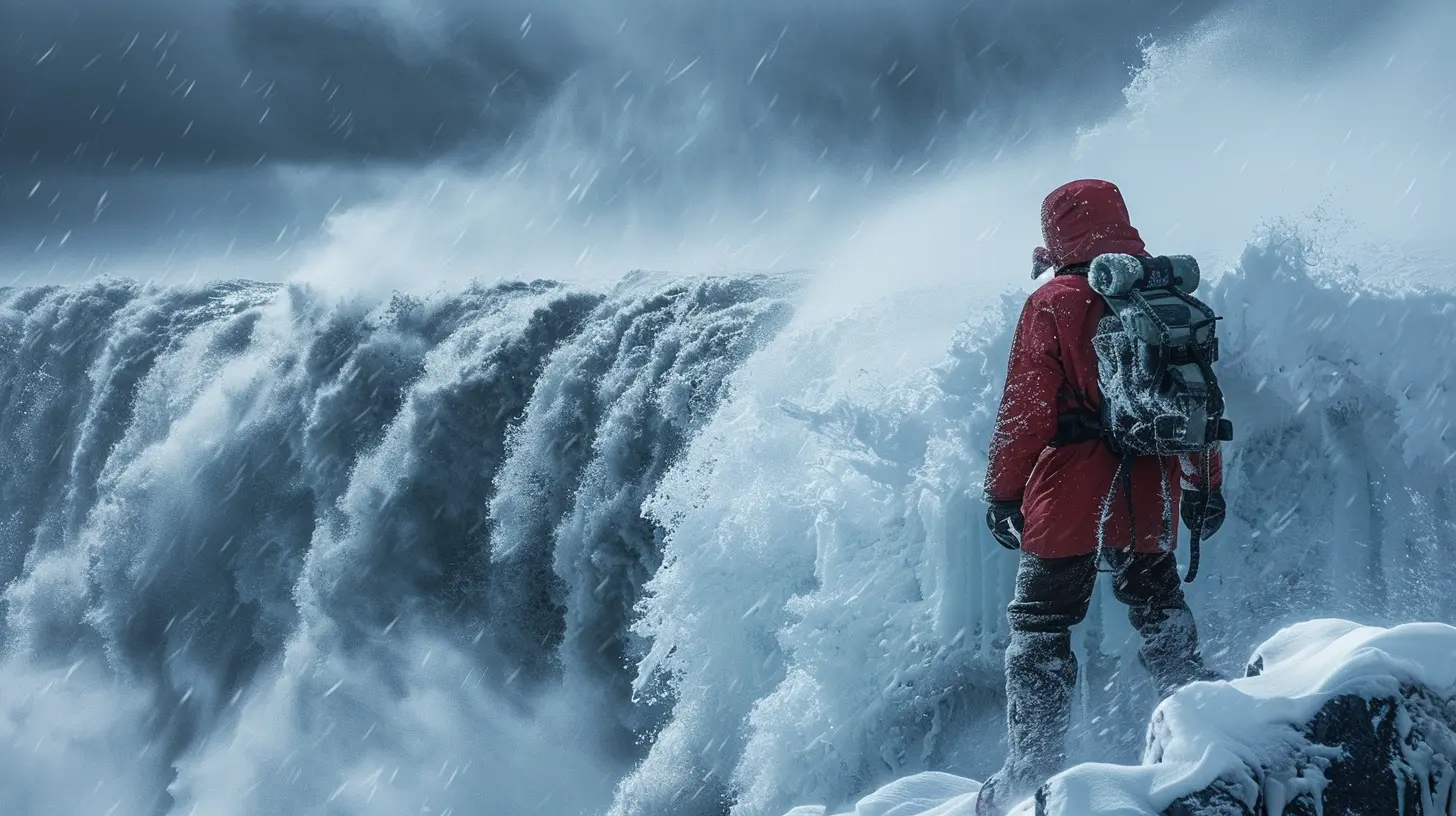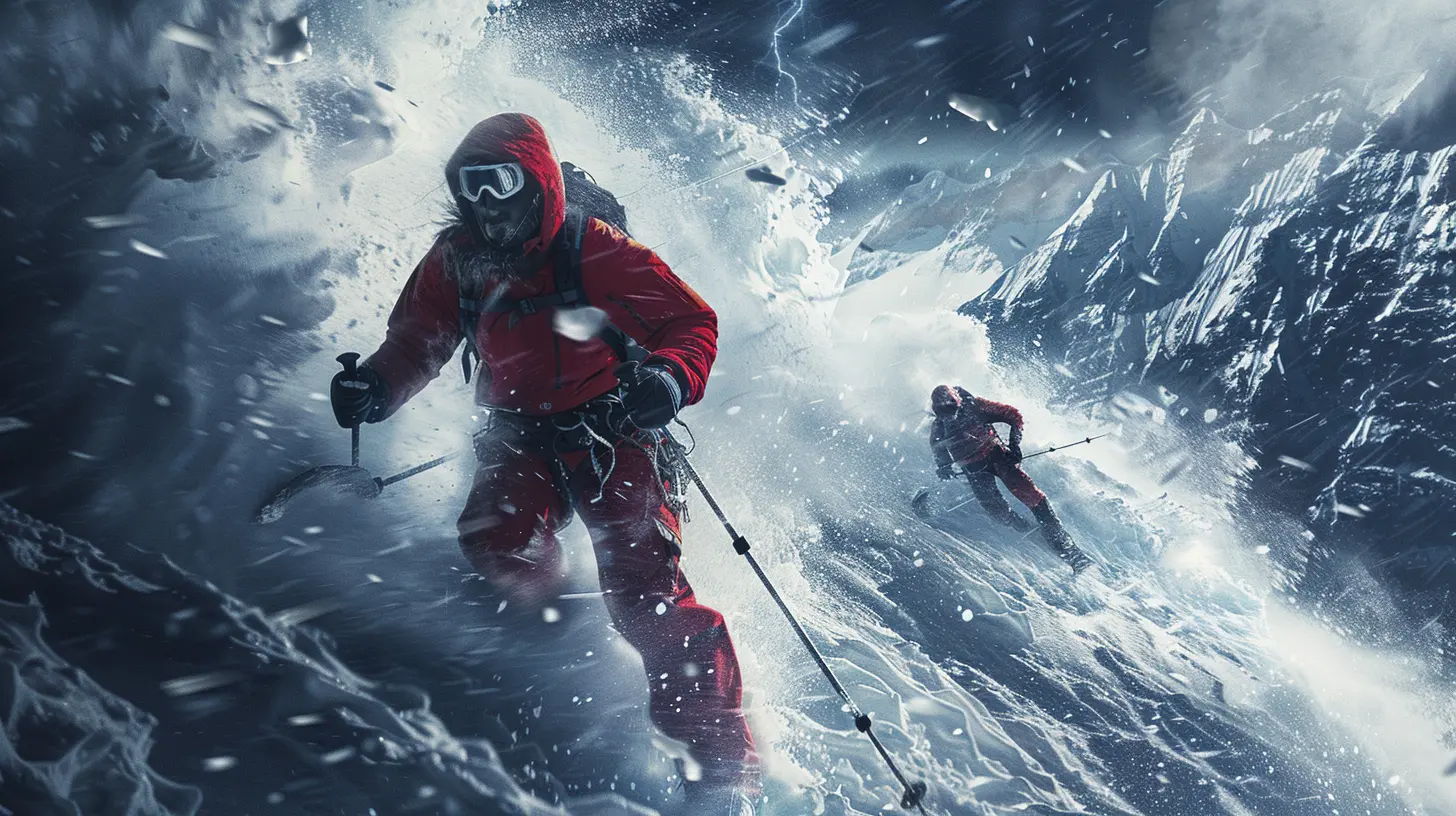26 November 2024
Extreme sports aren’t just about adrenaline and pushing physical limits — they’re about battling the elements too. Whether it’s the biting cold of the Arctic, scorching heat of the desert, or the relentless waves of the ocean, those who partake in extreme sports often find themselves facing nature’s most challenging conditions. So, what drives these thrill-seekers to tackle such punishing environments? And more importantly, how do they survive?
In this article, we’re going to dive deep into the world of extreme sports in harsh conditions, uncovering what it takes to not only thrive but survive when nature is at its most unforgiving.

The Call of the Wild: Why Do People Do It?
Before we get into the nitty-gritty of surviving extreme environments, let’s start with the simple question: Why? Why do people willingly put themselves in situations where the environment itself could be their biggest adversary?Well, there’s something primal about testing oneself against the raw power of nature. It’s not just about the sport itself — it’s about the experience. The thrill of skiing down an untouched, snow-covered mountain or surfing a massive wave as a storm rolls in isn't just a physical challenge; it’s a mental and emotional one too. It’s about conquering fear, embracing the unknown, and coming out the other side stronger.
And let’s be real — it also makes for some epic stories to tell!

Types of Extreme Sports in Harsh Conditions
Now, let’s explore some of the most popular extreme sports that take place in particularly brutal environments. These sports aren’t just difficult because of the physical demands; they’re made significantly tougher by nature itself.1. Ice Climbing
Ice climbing is exactly what it sounds like — scaling frozen waterfalls or ice-covered mountainsides. The challenge? You’re battling freezing temperatures, slippery surfaces, and the constant risk of falling ice. Climbers rely on specialized equipment like ice axes and crampons to dig into the ice, and every step can be life or death.Surviving the Cold:
To survive in such freezing conditions, climbers need to layer up with high-performance clothing designed for extreme cold. But it’s not just about warmth — it’s about moisture management. Sweat can be deadly in these conditions because it cools your body down rapidly. Keeping gear dry and maintaining body heat are crucial for survival.2. Desert Ultra Marathons
Running a marathon is tough. Now, imagine doing it in the blistering heat of the desert. Desert ultra-marathons, like the Marathon des Sables, push athletes to their absolute limits, often covering hundreds of kilometers in temperatures that can soar above 120°F (49°C).Surviving the Heat:
Surviving in the desert is all about hydration and sun protection. Runners need to carry water at all times and consistently monitor their hydration levels. Dehydration can sneak up on you quickly, and once it hits, recovery is hard. Lightweight, breathable clothing that protects from the sun is also crucial, as is knowing when to rest and cool down.3. Big Wave Surfing
Big wave surfing isn’t your average day at the beach. We’re talking waves that reach 60-100 feet, like those found in places such as Nazaré, Portugal, or Jaws in Hawaii. These waves are powerful and can easily hold a surfer under the water for extended periods, making it one of the most dangerous sports on the planet.Surviving the Ocean:
In big wave surfing, physical strength and endurance are essential, but mental toughness is just as important. Surfers face the constant threat of being wiped out by the wave, and surviving underwater requires staying calm and conserving energy. Safety gear, like inflatable vests, can help bring a surfer to the surface after a wipeout. But at the end of the day, you need to respect the ocean’s power – because it doesn’t care how skilled you are.4. Mountaineering in the Himalayas
Climbing mountains is challenging enough, but when you’re scaling the world’s tallest peaks, like Everest or K2, you’re in a whole different league. The combination of altitude, freezing temperatures, and unpredictable weather make high-altitude mountaineering one of the deadliest sports around.Surviving the Altitude:
The real challenge here isn’t just the cold — it’s the altitude. At extreme heights, the air is thin, which makes breathing difficult. Climbers must acclimatize slowly to avoid altitude sickness, which can be fatal. Oxygen tanks are often necessary above certain altitudes, and knowing how to read the weather is essential. Sometimes, survival means knowing when to turn back.5. Wingsuit Flying in High Winds
Wingsuit flying is essentially skydiving on steroids. The participants wear a specially designed suit with fabric between the legs and arms, allowing them to glide through the air. Now, throw in high winds or mountain cliffs, and you’ve got a recipe for disaster if you don’t know what you’re doing.Surviving the Winds:
Flying through the air at over 100 mph requires precision and control. But when you add unpredictable winds, things can get dangerous fast. Pilots need to have an intimate understanding of wind patterns and how their suit reacts to different forces. One wrong move, and they could end up crashing into a cliff or losing control mid-air.
Psychological Battle: Mind Over Matter
Surviving extreme sports in harsh conditions isn’t just about physical preparation. It’s about mental toughness. The body can only do so much before the mind needs to take over. In many cases, athletes have to push through extreme pain, discomfort, and fear to keep going.Take mountaineers, for example. When you’re thousands of feet up a mountain, exhausted and freezing, it’s your mental grit that’ll get you to the summit. Or consider surfers tackling 60-foot waves — if they panic when they’re held underwater, they’re much more likely to drown. Staying calm under pressure is not just an asset; it’s a survival tool.
Techniques to Build Mental Resilience:
- Visualization: Many athletes use visualization techniques to mentally prepare for the challenges ahead. By imagining themselves succeeding, they build confidence in their ability to handle whatever comes their way.- Controlled Breathing: In high-stress situations, controlling your breath can help calm your mind and body. This is especially important in sports like big wave surfing or wingsuit flying, where fear can lead to fatal mistakes.
- Positive Self-Talk: When things get tough, the inner dialogue can make or break you. Athletes often use positive affirmations to push through the pain and keep going.

The Importance of Gear and Technology
You can’t talk about extreme sports in harsh conditions without mentioning the importance of gear and technology. The right equipment can mean the difference between life and death.1. Clothing and Insulation
In cold environments like ice climbing or mountaineering, having the proper clothing and insulation is essential. Modern materials like Gore-Tex and down insulation provide warmth while remaining lightweight and breathable. Layering is key to maintaining body heat while allowing flexibility for movement.2. Navigation Tools
In deserts or mountains, GPS devices and compasses are critical. Losing your way in these environments can be deadly, so athletes need reliable navigation tools to guide them safely.3. Safety Gear
From helmets to inflatable vests, safety gear in extreme sports has evolved significantly. For instance, in big wave surfing, inflatable vests can help surfers get back to the surface after a wipeout. Similarly, wingsuit flyers wear helmets equipped with communication devices in case of emergencies.4. Advanced Materials
In sports like rock climbing or ice climbing, athletes rely on ropes and harnesses made from cutting-edge materials like Dyneema, which is incredibly strong and lightweight. These materials allow athletes to push their limits while staying as safe as possible.Conclusion: Embracing the Elements
Extreme sports in harsh conditions aren’t just about pushing the limits of the human body — they’re about respecting and understanding the forces of nature. Whether battling scorching heat, freezing cold, or the unpredictability of the ocean, the athletes who take on these challenges are a unique breed. They’ve learned how to survive — and thrive — in some of the most brutal environments on the planet.But at the end of the day, it’s not just about the sport. It’s about the journey of self-discovery, the thrill of conquering fear, and the indescribable feeling of standing at the top of the world, knowing you’ve not only survived the elements but mastered them.







![The Engine of the Team: How [Player Name] Drives Success](/pictures/blog/small/the-engine-of-the-team-how-player-name-drives-success_2.webp)

![The Quiet Dominator: How [Player Name] Lets Their Game Do the Talking](/pictures/blog/small/the-quiet-dominator-how-player-name-lets-their-game-do-the-talking_2.webp)
![Beyond the Stats: The Leadership of [Player Name] On and Off the Field](/pictures/blog/small/beyond-the-stats-the-leadership-of-player-name-on-and-off-the-field_2.webp)

Joanna McClain
Thrilling challenge, true grit!
April 8, 2025 at 2:33 AM